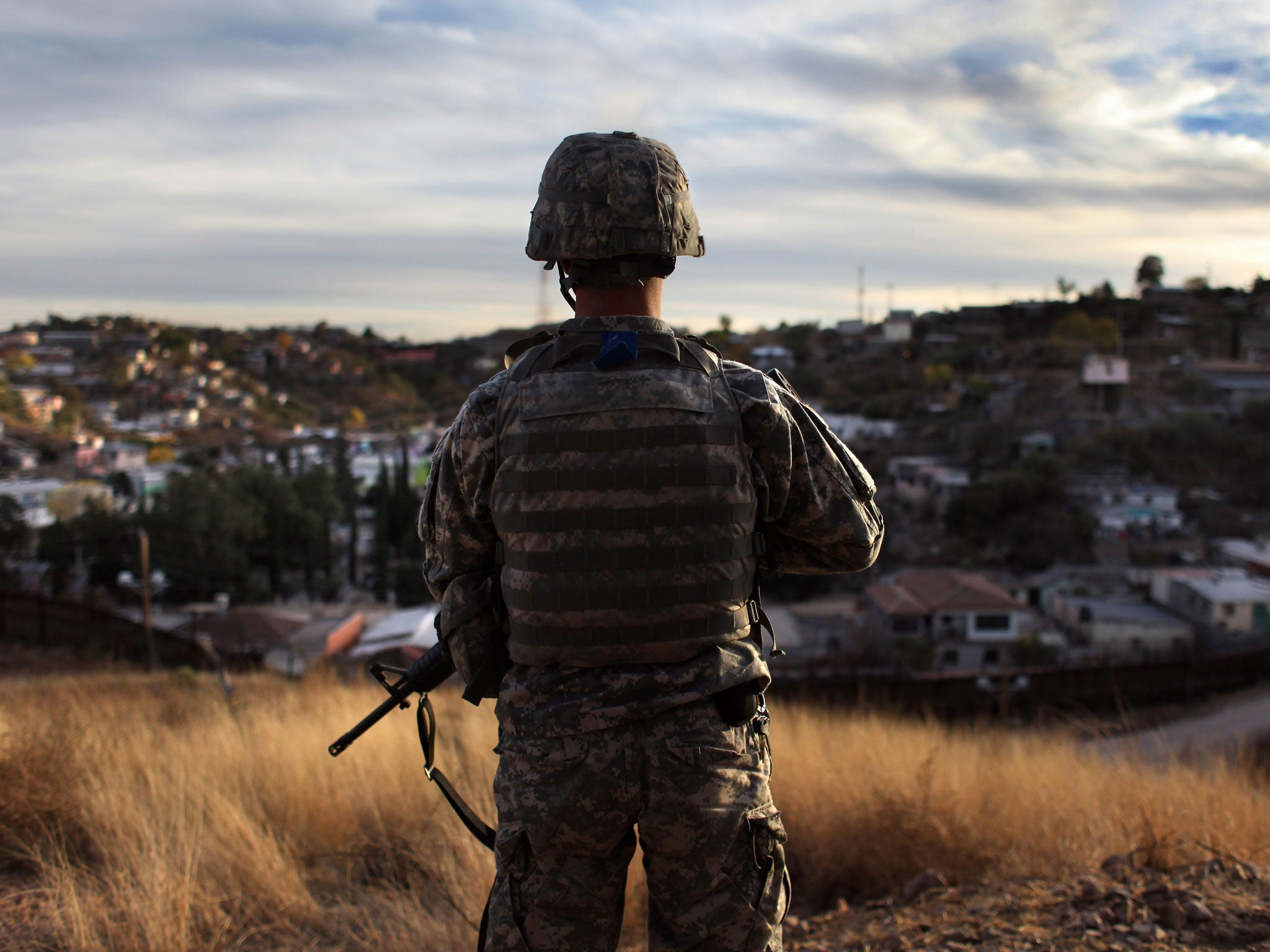Death on the US-Mexican border: the killings America chooses to ignore
Since 2005, patrol agents and CBP officers have killed some 42 people along the US-Mexican border without facing any public consequences – or any large-scale media coverage

On 28 May 28 2010, 42-year-old Anastacio Hernandez Rojas was detained by US Customs and Border Protection (CBP) agents while attempting to enter California from Mexico, at the San Ysidro border crossing near San Diego. Hernandez Rojas had previously spent 25 years living as an undocumented immigrant north of the border, where he worked as a swimming pool plasterer and fathered five American-born children.
That evening, he was in the process of being deported back into Mexico when he was handcuffed and hog-tied on the tarmac close to the border, and surrounded by more than a dozen CBP agents and Border Patrol officers, who kicked and beat him until several of his ribs were broken. As he pleaded for help, one officer reportedly yanked down the Mexican’s trousers and shocked him with a taser gun at least five times. All told, the attack went on for almost half an hour. Hernandez Rojas was admitted to hospital, where, three days later, he died of his injuries.
San Ysidro is the busiest border crossing on Earth, so there were numerous eyewitnesses to the incident, several of whom recorded the violent scene on their phones.
Their videos undermine the official report, which claimed that Hernandez Rojas was hostile and combative. The San Diego medical examiner ruled his death a homicide, but the US attorney decided that the CBP response had been “appropriate”.
When the victim’s widow filed a wrongful death suit, her attorney Eugene Iredale asked to view the footage from the CBP’s own closed-circuit cameras. “There are video cameras throughout the facility,” Iredale recently told the Arizona Republic.
“But somehow, the video cameras weren’t turned on, or they were facing the other way. I could say something cynical, but I don’t need to.”
The Hernandez Rojas case is one of many detailed in a lengthy investigative report by the Republic, published this week, which found that since 2005 Border Patrol agents and CBP officers have killed some 42 people along the length of the US-Mexican border, without facing any public consequences, and in spite of numerous appeals made directly to the Obama administration by campaigners, the victim’s families and the Mexican government.
Roberto Lovato, the co-founder of Presente, a Latino advocacy group based in California, told The Independent, “The case of Anastacio Hernandez Rojas is emblematic of a disease that runs to the cold heart of the Obama administration’s immigration policy. The administration’s silence before the killing of innocents is enabling the Border Patrol to continue to kill and abuse with utter impunity. This is an agency that refuses to be accountable to anyone.”
Last year in Nogales, near the border with Arizona, 16-year-old Jose Antonio Elena Rodriguez was shot 10 times by Border Patrol agents firing through the border fence from the US side. The official report suggested the teenager had been throwing rocks at his killers, a claim that eyewitnesses refuted. According to the Republic, incidents in which people do throw rocks at Border Patrol agents are routinely resolved with the use of non-lethal deterrents, including pepper spray. Yet “rockings” have also led to eight killings by Border Patrol agents since 2010.
Observers say these troubling statistics stem from a 2007 decision by the Bush administration to double the ranks of the US Border Patrol. Within five years, the force swelled from 11,000 to more than 21,000 agents. To attract such numbers, the agency reportedly took on recruits with minimal qualifications, made only cursory background checks, and relaxed its training regime. Thus almost half of the heavily armed force are relatively inexperienced.
John Carlos Frey, an investigative reporter who has covered the US-Mexican border for around 10 years, said he knew of hundreds of examples of brutality perpetrated by the Border Patrol, ranging from verbal abuse to torture to murder. “I don’t consider what happened to Anastacio Hernandez Rojas to be an isolated incident,” Frey said.
“There is a culture of brutality within the US Border Patrol. It’s a federal agency, and it falls under the umbrella of the Department of Homeland Security, which gives its agents a cloak of protection. They basically get to do whatever they want and claim they’re protecting the country.”
In September, the Homeland Security Department’s Office of Inspector General released a report on the use of force by CBP, which served only to highlight the agency’s lack of transparency: the inspectors were unable to fully investigate hundreds of cases, because the CBP doesn’t track the allegations of excessive force made against it. Last year, 16 members of Congress wrote to the then Secretary of Homeland Security, Janet Napolitano, to demand a full investigation into Hernandez Rojas’s death. A federal grand jury investigation followed, but none of the officers involved has been charged.
The shocking footage of the beating, which can still be viewed on the web, undoubtedly recalls the video of the 1991 attack on black motorist Rodney King by Los Angeles police officers, which led to riots, a national outcry and wholesale reform of the LAPD. Yet the media has shown relatively little interest in the case of Hernandez Rojas and others like him.
“The fact that Hernandez Rojas was undocumented plays a big part; the US media has no idea how to cover issues of undocumented immigrants,” Frey said.
“They’re seen as criminals first, so who cares what happened? And the fact that he’s Mexican makes him a second-class resident… I’ve pitched stories to broadcast media about the border, and if the subject doesn’t speak English, they throw the story aside.”
Subscribe to Independent Premium to bookmark this article
Want to bookmark your favourite articles and stories to read or reference later? Start your Independent Premium subscription today.

Join our commenting forum
Join thought-provoking conversations, follow other Independent readers and see their replies